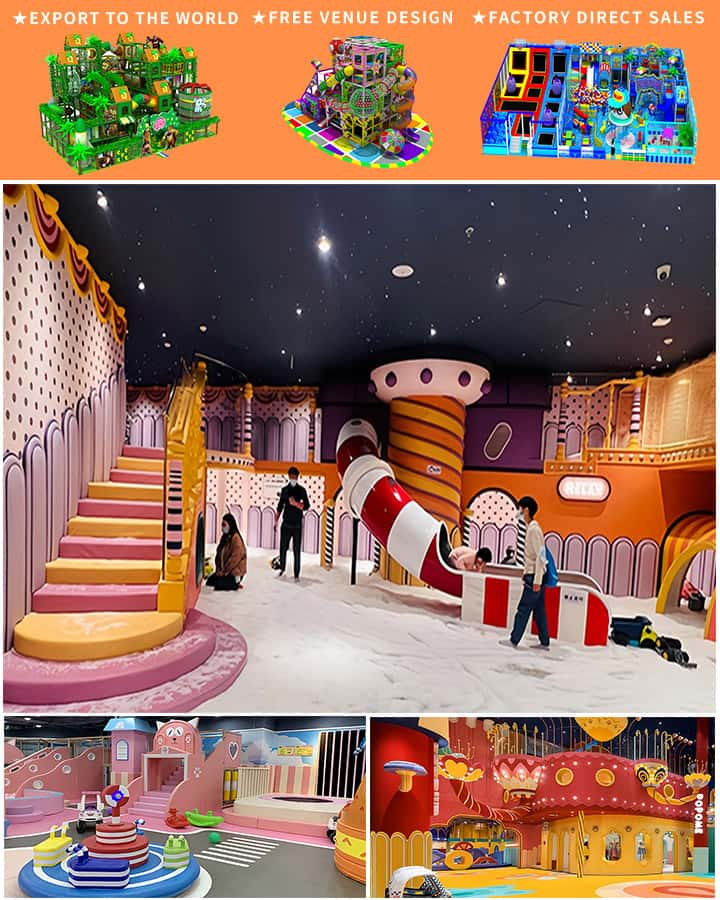Starting an indoor playground can be a fulfilling and profitable venture, providing endless fun for children and a lucrative opportunity for entrepreneurs. However, launching such a business requires careful planning, strategic decision-making, and thorough understanding of various operational facets. This article aims to guide you through the essential steps involved in starting an indoor playground, from initial conceptualization to opening your doors to eager young visitors.
Conduct Market Research
Understanding the market is crucial when starting any business, and an indoor playground is no exception. Begin by researching local demographics to identify potential customer bases. Consider the age groups you aim to cater to, as different age ranges have distinct play needs and safety requirements. Analyze competitors in your area; visit other indoor playgrounds to understand what works and what doesn’t. Pay attention to their amenities, pricing strategies, and customer reviews. This will help you carve out a unique selling proposition (USP) to differentiate your playground from others.
Develop a Business Plan
A well-structured business plan serves as the roadmap for your indoor playground. It should include detailed projections on startup costs, operational expenses, revenue forecasts, and break-even analysis. Outline the necessary permits and licenses required to operate legally in your location. Additionally, craft marketing strategies to attract and retain customers, including social media campaigns, partnerships with local schools, and promotional events.
Choose the Right Location

The success of an indoor playground heavily relies on its location. Ideally, select a site with high foot traffic, good visibility, and ample parking space. Consider spaces in shopping malls, community centers, or standalone buildings. Ensure the facility is easily accessible and located in a safe neighborhood. Assess the size of the venue based on your budget and the volume of expected visitors.
Design the Play Area
A captivating and safe environment is paramount in indoor playground design. Collaborate with professional designers who specialize in recreational spaces for children. The design should incorporate a variety of play structures like climbing walls, ball pits, slides, and interactive games that cater to different age groups. Safety is non-negotiable: use soft flooring materials to cushion falls, ensure equipment is securely anchored, and regularly inspect the playground for potential hazards.
Acquire Necessary Equipment and Supplies
Purchasing high-quality, durable play equipment is vital for both safety and longevity. Look for suppliers that offer warranties and adhere to strict safety standards. Besides the play structures, stock up on essential supplies such as clean socks for entry (to maintain hygiene), first aid kits, and sanitizing products. Create a welcoming reception area with comfortable seating for parents, a snack bar, and retail space for souvenirs or party supplies.
Hire Qualified Staff
Your staff is integral to the smooth operation and overall experience at the indoor playground. Recruit individuals passionate about working with children and possessing relevant qualifications, such as CPR and first aid certifications. Train your employees in customer service, safety protocols, and emergency procedures to ensure they can efficiently handle any situation.
Launch and Promote Your Indoor Playground
With everything set up, it’s time to open your indoor playground to the public. Host a grand opening event with special discounts, free trials, or themed parties to draw attention. Utilize digital marketing channels like social media, Google My Business, and email newsletters to spread the word. Offer loyalty programs and referral incentives to encourage repeat visits. Engage with your community through sponsorships of local events or collaborations with schools and daycare centers.
Maintain High Standards of Cleanliness and Safety
Once operational, maintaining stringent cleanliness and safety standards is imperative. Regularly sanitize play equipment and common areas to prevent the spread of germs. Institute clear rules for behavior and supervision to ensure a safe environment for all children. Stay updated on industry regulations and continually assess your operations to make necessary improvements.
Conclusion
Starting an indoor playground is a rewarding endeavor that combines creativity, strategic planning, and a passion for fostering joy in children. By following these steps and committing to excellence in every aspect of your business, you can create a thriving indoor playground that stands out in the competitive landscape. Remember, the key to success lies in offering a safe, enjoyable, and memorable experience for your young patrons and peace of mind for their guardians. Happy playground building!




